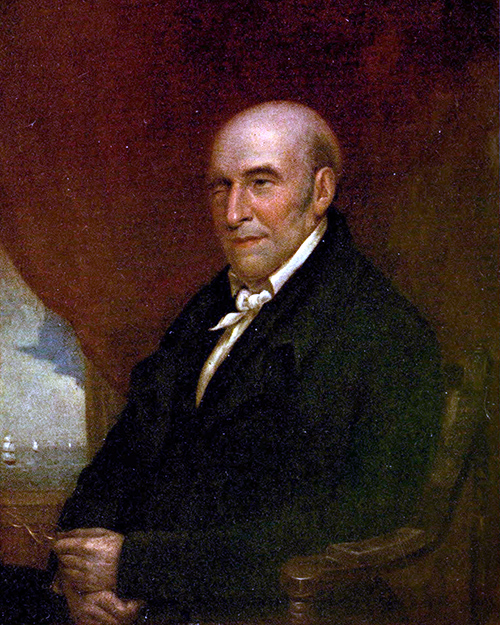Some comedies of the 1950’s had interesting attitudes toward taxes and wealth.
In the 1950 fantasy—The Great Rupert (aka The Christmas Wish)—a vaudevillian family is unaware that a trained squirrel is responsible for money raining down on them from the ceiling (every Thursday between 3-3:30 PM).
Rupert, the squirrel, is moving money from their landlord’s secret stash in the apartment above.
The Amendola family is convinced that the cash is a heavenly gift, and they use it (reasonably wisely) to pay their rent, celebrate a lovely Christmas, and help their neighbors.
Local gossip brings the FBI, tax investigators, and the police.
However, there’s a happy ending.
A scene—in which Mr. and Mrs. Amendola attempt to convince the taxmen that their money was a gift from above—is shown above.
Another comedy from 1950 is The Jackpot.
In this film, Bill Lawrence (James Stewart) wins $24,000 (in prizes) on a radio quiz program, only to learn he’ll need to pay $7,000 in taxes.
(In that era, according to the tax laws, you needed to pay taxes on the full retail prices for all won prizes.)
As a result, Jimmy’s pleasant life is turned upside down, and he could lose his job, his marriage, and his house.
In 1950, $24,000 was the equivalent of $309,038.34 today, and $7,000 was the equivalent of $90,136.18.
The 1959 comedy, The Mating Game, tells the story of the Larkins—a farming family that lives by bartering for goods and services—and who haven’t filed tax returns in several generations.
Tony Randall is an IRS agent assigned to investigate how much back taxes they owe.
Like The Great Rupert, The Mating Game is a comedy with a happy ending.
In the case of the Larkin family, the Feds actually owe the Larkins money!
The theme of all of these films is that money doesn’t equal happiness.
It’s also that living in a nonmaterialistic way, is much better than existing as a tightfisted money-grubber.
In both The Great Rupert and The Mating Game, jealous people call up the IRS to report on their neighbors.
In The Great Rupert, a few neighbors are envious of the Amendola family; in The Mating Game, a wealthy neighbor desires the Larkin land.
Taxation is a mandatory contribution to a government (by its’ citizens), in order to acquire revenue for governmental needs.*
By designing new laws, and altering tax rates, governments do more than care for their citizens.
The taxation system affects the disposable income available to the population.
As economies change, so must the tax structures.
The individual income tax was first introduced, in 1798, in England.
However, individual income taxes didn’t become progressive until 1907 (in England), and 1914 (in the U.S.).
One principal of taxation is that taxes be equitable, but that’s a difficult goal to achieve.
Economists fear that taxpayers may choose to work less, save less, or invest less, depending on the tax structure; therefore, governments “tinker” with the tax code.
There were some good things about the McConnell-Trump Tax Cuts and Jobs Act of 2017, but all the good aspects were temporary!
The new law changed the tax brackets, and increased the income levels, which reduced some taxes.
The Tax Act also increased the standard deduction, so less people are itemizing.
The sad fact remains that most of the good changes all vanish in 2025!
The main problem with the McConnell-Trump Tax Cuts and Jobs Act of 2017 was that the revised tax laws made inequality worse, plus it increased the national debt!
Besides permanently cutting the corporate tax rate from 35% to 21%, it doubled the estate tax exemption from $11 million per couple to $22 million per couple, and cut the top rate from 39.6% to 37%.
McConnell, and Trump, claimed that the Tax Cuts and Jobs Act of 2017 would be “rocket fuel” for the economy.
They were wrong!
American businesses didn’t invest in new technology, hire more workers, or build more factories.
Instead, they fired workers, gave money to shareholders, and increased the compensation for CEOs.
Little money “trickled down” to middle-class and lower-class tax payers, and the tax system became less equitable.
The Congressional Budget Office estimates that the McConnell-Trump 2017 Tax Act will cost the Federal Government $1.9 trillion in revenue between 2019-2029.
Furthermore, the national debt increased to $7.8 trillion by the time Trump left office!
The Democratic Party should be talking more about those two facts.
Unless the Government is able to make further changes to the tax codes, in 2025—perhaps, so that people with higher incomes pay a bit more—the Government debt will continue to grow grow and social programs will need to be cut.
Choose your poison!
*All data on the history of taxes taken from the last printed set (1997) of Collier’s Encyclopedia.















